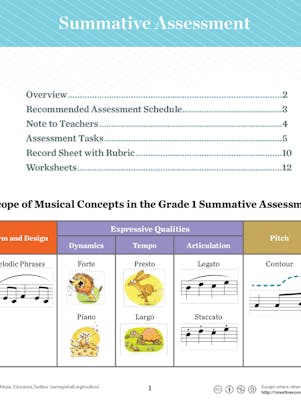Music Educators Toolbox
Performing and Composing Four Beat Patterns
Jump to section:
Aim: How can we perform and create rhythmic patterns?
Summary: Students read, perform, and compose four-beat rhythmic patterns.
Standards: US 2, 3, 4, 5; NYC 1, 2, 3
Grade: 1st
Concept: Rhythm & Meter
Artistic Process: performing, responding, creating
Materials: rhythm cards, manipulatives to represent note values (e.g., popsicle sticks, paper cutouts, etc.)
Time Required: 15 minutes
Instructions
- Sing or clap rhythmic patterns in 4/4 meter together through call and response (using quarter-notes, eighth-note pairs, and quarter-note rests).
Download Teacher Worksheet (PDF) - Define 4/4 meter and explain that we have been performing measures of 4/4 rhythmic patterns.
- Using manipulatives (e.g., popsicle sticks, paper cutouts, etc.) to represent quarter-notes, eighth-note pairs, and quarter-note rests, model composing a four-beat rhythm. Emphasize counting the note values to make sure the pattern is exactly four beats. Perform the model composition together as a class by clapping or tapping the rhythm.
- Have students compose their own four-beat rhythms using the classroom materials.
- Arrange all of the class patterns in a line or circle on the floor. Have student volunteers perform their own compositions or those of their classmates.
Going Deeper
- Have students add lyrics to their rhythmic composition, using a theme such as food (e.g., “ap-ple pie yum” for
 ) or nonsense syllables (“doo bee doo dah”).
) or nonsense syllables (“doo bee doo dah”). - Divide the class in half. Let one half tap a steady beat while the other half performs rhythms from cards or slides. Take turns. You may also have individual students perform a rhythm, while the rest of the class keeps the steady beat.
Assessments
Except where otherwise noted, this work is licensed under a Creative Commons Attribution Non-Commercial Share Alike 3.0 Unported License.


